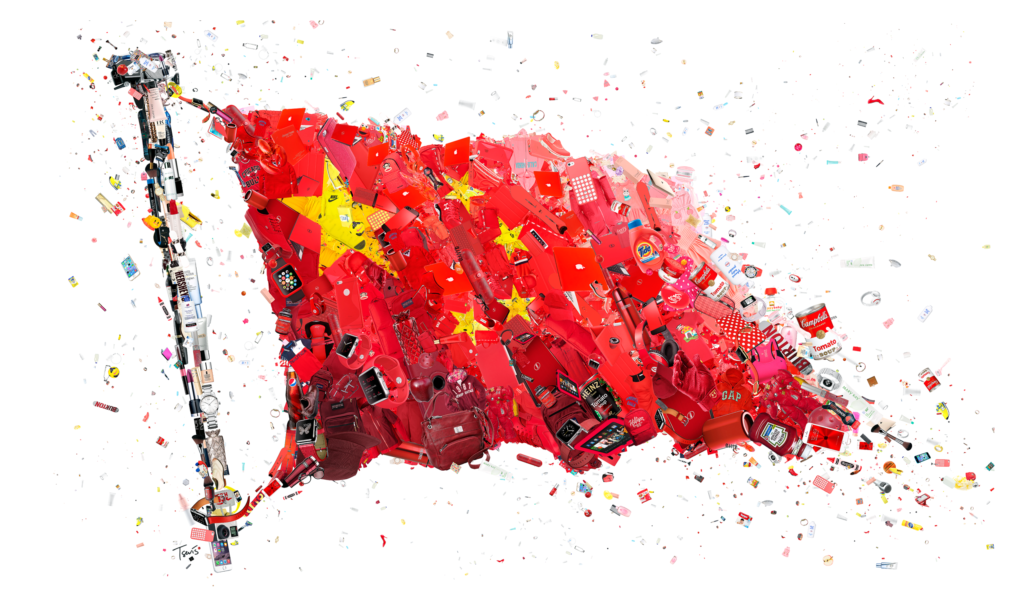
A question was recently posed on a LinkedIn Group asking why there aren’t more Chinese companies selling brands into the U.S.
Rather than taking a myopic view on the question or dismissing the notion that Chinese brands per se’ have little to no chance of overcoming the stereotype of the U.S. consumer, it strikes me that the real opportunities continue to lie in synergizing and combining strengths, resources and talents. The skills for identifying and penetrating the best distribution channels in the U.S. are here. If a Chinese entity wants to lever this market they are wise to understand that this can’t be done (yet) with a Chinese brand or with Chinese sales and marketing.
Conversely however, through innovation, low cost labor and subsidies, China remains the factory to the world in multiple categories. There are facilities in China that are far superior to our own. What has been increasingly evident is China’s transformation from merely an OEM to an ODM supplier meaning that in addition to offering strictly manufacturing China is now becoming a low cost design and engineering hub. So don’t think cheap cost is the only driver for China’s potential here.
Beijing has taken note of the dearth of Chinese brands.
“We’ve lost a bucketload of money to foreigners because they have brands and we don’t,” complained Fan Chunyong, the secretary general of the China Industrial Overseas Development and Planning Association. “Our clothes are Italian, French, German, so the profits are all leaving China. . . . We need to create brands, and fast.”
So according to Tom Pomfret’s Washington Post article titled, “Beijing tries to push beyond Made in China Status,” the government has responded in lavish status by embracing a “going out” strategy http://bit.ly/going-out backing firms seeking to seeking to buy foreign businesses and gain a foothold on innovation.
If China wants to deploy its assets by capturing a piece of a market here OR if a U.S. company wants to sell into the Chinese market here are four key considerations.
1. A Brand Is A Very Different Thing Between Our Two Countries
Most brands sold into China are Western. For the Chinese it is more cache’ or prestige that drives demand. For the U.S. a brand is many things but mostly involves years of exposure and dollars spent positioning the brand to its respective markets (assuming high quality and value are the cost of admission). Only in the last 10 years or so has there been demand for consumer brands in China yet there is almost built in demand for established brands from the West.
2. Successes and Failures of Previous Attempts
For U.S. companies wanting to tap into the China market they should consider brands like Loreal, Buick, and Coke to see what has been successful and what has failed. You can’t simply put a known label on a piece of junk and believe you’ll capture the loyalty of the Chinese market. The Chinese want prestige yes, but they also focus on safety and quality too. Are you speaking to a younger audience; the decision influencers of the future? See http://bit.ly/caWdra.
What about distribution channels? We may understand traditional retail here but it is a completely different game in China. According to the China Chain Store and Franchise Association, the number of stores of the 100 largest retailers in China increased 18.9% in 2009. The 100 largest retail chains sold only 11% of all consumer goods in China. How is your experience marketing to kiosks and neighborhoods? Have you ever set up a sales force to tap into a billion person market?
3. Patience is a Virtue
If a Chinese investor(s) wants to sell goods into the U.S. they will have to have reasonable expectations for investment in gaining market share. They won’t necessarily understand or be patient with the initial burn rate of capital for their ROI so tell them to fund the endeavor, put it the hands of U.S. marketing professionals and apply their expertise and focus on the supply chain and manufacturing. This isn’t to suggest in a cavalier way that they should be totally hands off. As principals they have every right to monitor their investments.
4. Future Opportunities
There are enormous opportunities in the creation of funds that don’t necessarily follow the typical M&A or PE models when it comes to risk or multiples. There are many well known companies who through their years of staying power still maintain significant brand equity yet may only be doing $10-$50MM in sales–not enough to fly on the radar of big deal makers yet still very viable with the right investor profile.
Take that state of the art factory you have in Shenzhen and manufacture AND OWN an old U.S. brand putting together a “newco” re-launch model. There has never been a better time and available talent here.
We are not going to see Chinese or U.S. brands in the future but rather well funded global brands that offer businesses or consumers the best return for their investment.
David Alexander is President, North America for BaySource Global, a strategic solutions provider specializing in specialized sourcing, project management, distribution and fulfillment in China.




Follow Us